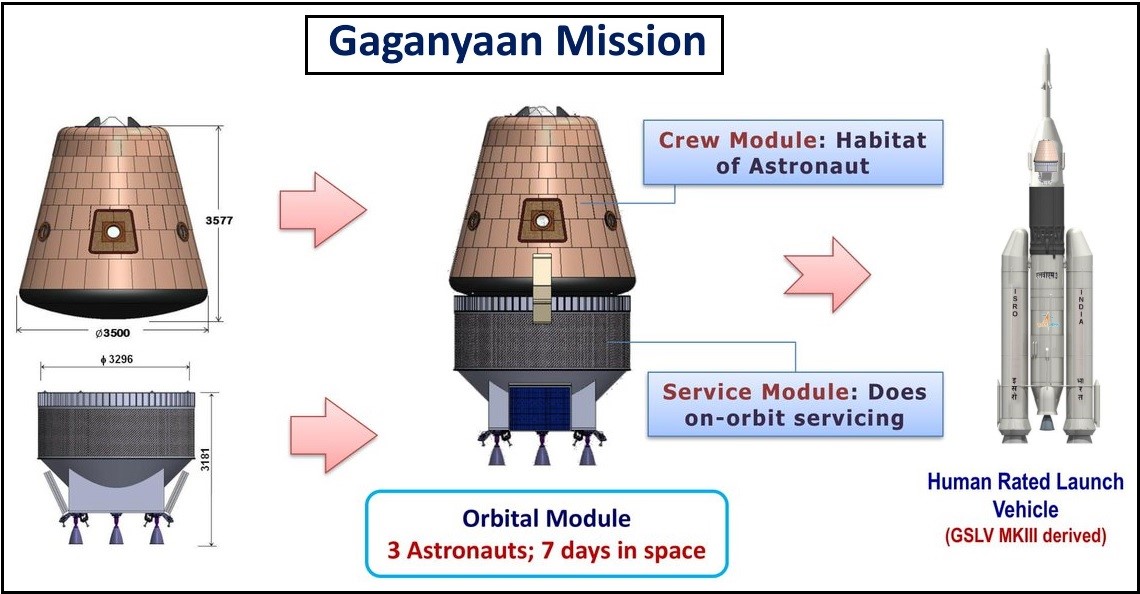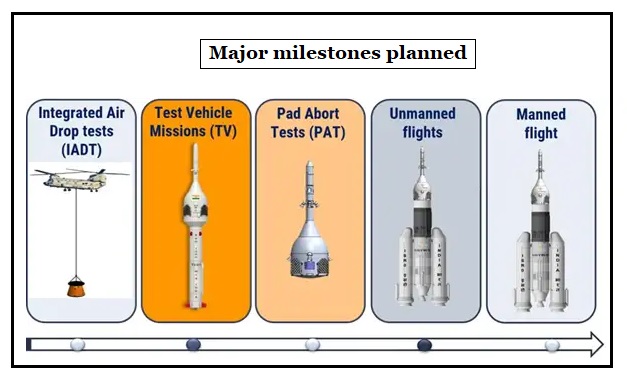7667766266
enquiry@shankarias.in
Indian Space Research Organisation (ISRO) successfully demonstrated the TV D1 mission, the first uncrewed developmental flight of ‘Gaganyaan’ human spaceflight mission.
To know more about the brief history of ISRO click here

If it succeeds, India will become only the 4th country to send a human into space after the Soviet Union, the US, and China.
|
LVM3 & HLVM3 |
|

|
Test Vehicle Abort Mission-1 (TV-D1) |
|
References